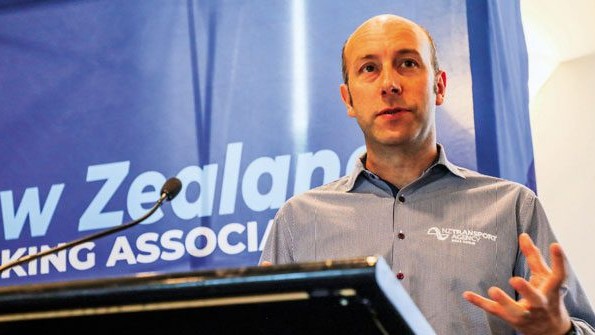A LEVEL HEAD

This article concludes our summary of the 2020 New Zealand Trucking Association Industry Summit, which took place on 21 November 2020.
According to Chris Ballantyne, NZTA safe rail, level-crossing incidents between trucks and trains have remained consistent in past years, averaging between three and five a year and totalling 38 since 2010.
“Level crossings are unique on the roading network; it’s the only time a truck driver will come across something bigger than their own vehicle,” commented Ballantyne. “The collisions are infrequent but overwhelmingly serious and fatal because of the great mass involved.”
A KiwiRail freight train can weigh up to 2000 tonnes and measure more than half a kilometre long. Under emergency braking, they’ll need more than a kilometre to come to a stop. There are approximately 2900 level crossings in New Zealand, half of which are on private roads. Only a quarter have active protection (bells and barriers). The chance of death from a level-crossing collision is about 13 times higher than from a road collision.
Ballantyne explained that a ‘nightmare scenario’ in the land-transport system involved a collision between a train and a heavy vehicle. Even with a much more fragile commuter train, a collision with a heavy vehicle could result in hundreds or thousands of fatalities.
Defiance, overconfidence and complacency among heavy-vehicle drivers are the most common issues that land them up in a level-crossing collision. “Level-crossing accidents happen a lot around rural roads and close to people’s homes where people may think they know the area and even the train schedule quite well. A lot of them happen in perfect driving conditions,” said Ballantyne.
What’s increasing the risk? Ballantyne said accident reports and statistics showed that level crossings were surprising people. “A 2000- tonne train can catch you off guard. They are harder to hear than you think because of your vehicle’s road noise. They can be harder to see than you think because of obstructions; they move faster than you think, and they’re closer than they appear. Sometimes, people think they can get across and miscalculate it; by the time a train driver has a line of sight on you, they’re not going to be at a significantly slower speed before the intersection.”
Ballantyne said some common reports included vehicles grounding out on raised crossings, glare and sun strike. Others included high-speed exits on highways, poor sightlines and the increased frequency of rail traffic.
Despite receiving $26 million over the next three-year funding cycle to upgrade these crossings, “level crossings aren’t going to get significantly safer at a great rate”, Ballantyne said.
Early warning solutions are being investigated, but these are still in development and not yet commercial propositions. “Ultimately, the key risk control remains in the driver’s hands,” said Ballantyne.
He suggested three recommendations for drivers:
• Stop, look and listen – take it slow and keep looking.
• Focus on the task – avoid distractions, always expect trains, be aware of the elevated risk.
• Do research – take time to plan and know your route and your vehicle.
Read more
Simeon Brown
0 Comments9 Minutes
Michael Wood
0 Comments12 Minutes
MIDGET ON A MISSION
0 Comments16 Minutes
Looking outside the bubble
0 Comments5 Minutes





